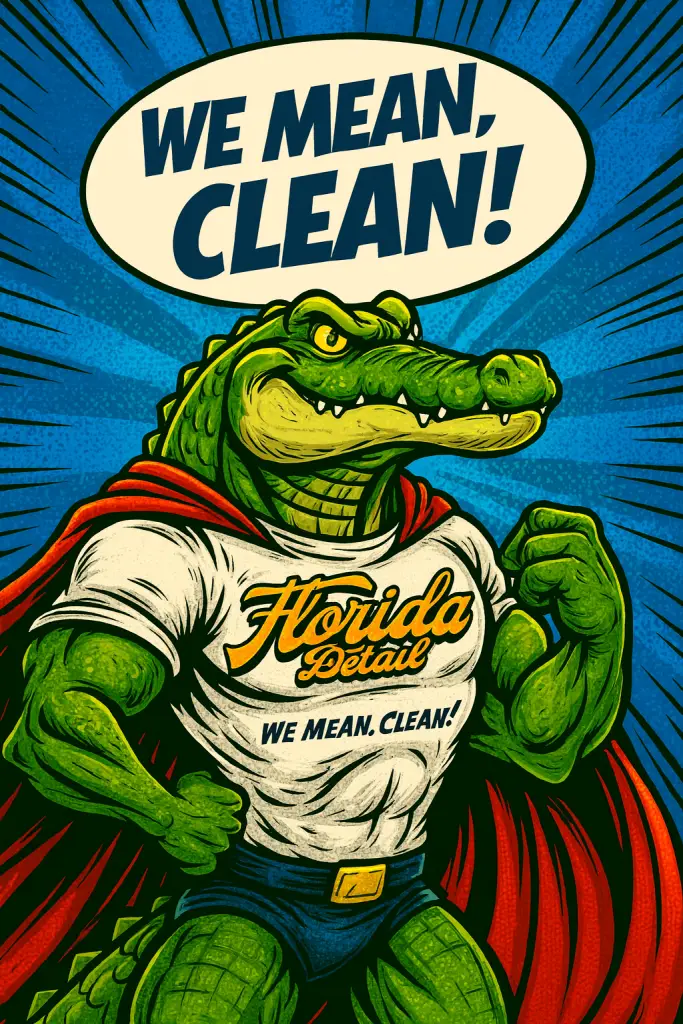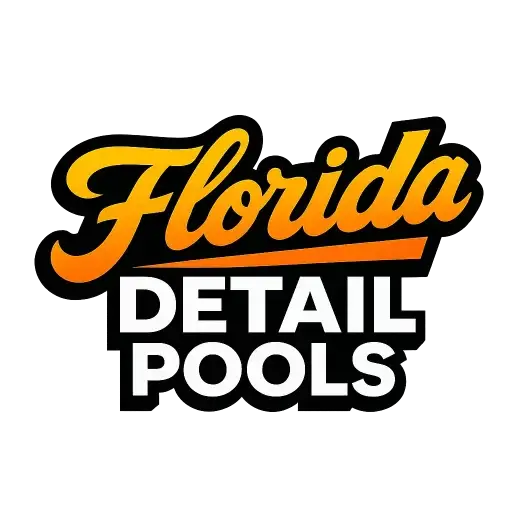How to Clean Your Pool Pump Without Professional Help
Pool pump maintenance represents one of the most critical aspects of pool care in Charlotte County, where equipment works year-round under demanding conditions. While many maintenance tasks benefit from professional expertise, homeowners can safely perform basic pump cleaning procedures that extend equipment life and improve performance between professional service visits.
Understanding when DIY maintenance is appropriate—and when professional intervention becomes necessary—helps Port Charlotte pool owners maintain their equipment safely while avoiding costly mistakes that could damage expensive components or create safety hazards.
Understanding Your Pool Pump System
Before attempting any maintenance, familiarize yourself with your pump’s components and operation to ensure safe, effective cleaning procedures.
Basic Pump Components
Motor Housing
- Contains the electrical motor that drives the impeller
- Should never be disassembled without professional expertise
- Requires proper electrical safety procedures during maintenance
- May contain capacitors that retain dangerous electrical charges
Pump Housing
- Contains the impeller and volute that move water
- Can be safely accessed by homeowners for basic cleaning
- Contains seals and gaskets that require careful handling
- Must be properly reassembled to prevent leaks
Strainer Basket
- Captures large debris before it reaches the impeller
- Designed for regular homeowner cleaning and maintenance
- Easy to access and clean without tools
- Critical for preventing pump damage from debris
Safety Precautions for DIY Pump Maintenance
Electrical Safety Requirements
Power Disconnection Protocol
- Turn off pump at the timer or control panel
- Disconnect power at the circuit breaker
- Verify power is off using a non-contact voltage tester
- Post warning signs to prevent accidental power restoration
GFCI Protection Verification
- Ensure all electrical connections have proper GFCI protection
- Test GFCI outlets monthly for proper operation
- Never work on electrical components in wet conditions
- Call professionals for any electrical repairs or modifications
Personal Safety Equipment
Required Safety Gear
- Safety glasses to protect eyes from chemicals and debris
- Chemical-resistant gloves for handling contaminated components
- Non-slip footwear for working around wet surfaces
- First aid supplies readily available during maintenance
Chemical Safety Considerations
- Never mix different cleaning chemicals
- Ensure adequate ventilation when using cleaning products
- Keep chemical safety data sheets accessible
- Have emergency contact information readily available

Step-by-Step Pump Cleaning Process
Preparation Phase
System Shutdown Follow proper shutdown procedures to ensure safe working conditions:
- Turn off automatic pool cleaner if connected
- Switch pump to “off” position at control panel
- Disconnect electrical power at circuit breaker
- Allow system to sit for 10 minutes to settle
Tool and Supply Gathering
- Garden hose with spray nozzle
- Soft-bristled brush for cleaning
- Bucket for debris collection
- Replacement O-rings and gaskets if needed
- Pool-safe lubricant for seals
Strainer Basket Cleaning
Basket Removal
- Remove pump lid by turning counterclockwise
- Lift strainer basket straight up to avoid damage
- Note basket orientation for proper reinstallation
- Inspect basket for cracks or damage
Thorough Cleaning Process
- Rinse basket with high-pressure water to remove debris
- Use soft brush to remove stubborn deposits
- Inspect basket bottom for small debris that could pass through
- Check basket handle and mounting points for wear
Professional Tip: Homeowners in Punta Gorda should clean strainer baskets twice weekly during peak debris seasons to prevent pump strain and maintain optimal performance.
Pump Lid and Seal Inspection
Lid Cleaning Procedures
- Remove old O-ring and clean groove thoroughly
- Inspect lid for cracks or warping that could prevent proper sealing
- Clean all surfaces that contact sealing surfaces
- Check for damage that could allow air leaks
O-Ring Maintenance
- Inspect O-ring for nicks, stretching, or deterioration
- Apply thin layer of pool-safe lubricant to new O-ring
- Install O-ring in groove without twisting or stretching
- Ensure proper seating before reassembly
Impeller Access and Cleaning
When DIY Cleaning Is Appropriate Homeowners can safely access the impeller in most single-speed pumps for basic debris removal:
- Visible debris wrapped around impeller
- Reduced flow despite clean strainer basket
- Unusual noises suggesting impeller obstruction
- Regular preventive maintenance between professional service
Safe Impeller Cleaning
- Remove pump housing bolts carefully and evenly
- Lift housing straight up to expose impeller
- Remove visible debris by hand—never use metal tools
- Rinse with clean water to remove remaining particles
- Inspect impeller vanes for damage or excessive wear
Warning Signs Requiring Professional Help
- Cracked or damaged impeller vanes
- Worn shaft seals showing water intrusion
- Unusual wear patterns suggesting alignment problems
- Any electrical component exposure or damage
Regional Considerations for Charlotte County
Environmental Factors
High Debris Loads North Port and Rotonda pools often experience heavy organic debris that requires frequent cleaning:
- Oak leaves and acorns during fall months
- Palm fronds and seed pods year-round
- Pollen and fine organic matter during spring
- Storm debris requiring immediate attention
UV Exposure Effects Intense Southwest Florida sunlight degrades plastic components:
- Pump lids become brittle and crack over time
- O-rings deteriorate faster than in northern climates
- Gaskets require more frequent replacement
- Regular inspection prevents sudden failures
Seasonal Maintenance Adjustments
Peak Season Demands During high-usage periods, increase cleaning frequency:
- Daily basket inspection and cleaning if necessary
- Weekly detailed pump cleaning and inspection
- Monthly professional performance evaluation
- Seasonal component replacement based on wear
Storm Season Preparation Hurricane season requires special preparation procedures:
- Extra strainer baskets for quick replacement after storms
- Emergency pump disassembly tools readily available
- Backup O-rings and seals for immediate repairs
- Professional contact information for emergency service
Maintenance Schedule for DIY Cleaning
Daily Tasks (During Peak Season)
- Visual inspection of pump operation
- Strainer basket emptying if heavily loaded
- Check for unusual noises or vibrations
- Verify proper water levels and flow
Weekly Maintenance
- Complete strainer basket cleaning and inspection
- Pump lid and O-ring examination
- Basic impeller cleaning if needed
- Performance assessment and documentation
Monthly Procedures
- Detailed component inspection and cleaning
- O-ring and gasket replacement as needed
- Motor housing exterior cleaning
- Professional performance evaluation scheduling
When to Call Professionals
Electrical Issues
Never attempt DIY repair for:
- Motor replacement or internal motor repair
- Wiring problems or electrical connections
- Control panel malfunctions or timer issues
- GFCI problems or circuit breaker trips
Mechanical Problems
Professional expertise required for:
- Shaft seal replacement and alignment
- Pump housing crack repair or replacement
- Impeller replacement or balancing issues
- Variable speed drive repair or programming
Performance Issues
Consult professionals when experiencing:
- Persistent low flow despite cleaning
- Unusual energy consumption increases
- Frequent component failures or wear
- Integration with automation systems
Cost-Benefit Analysis of DIY Maintenance
Potential Savings
Regular DIY cleaning provides:
- Extended periods between professional service calls
- Prevention of minor problems becoming major repairs
- Better understanding of equipment condition and needs
- Immediate response capability for urgent cleaning needs
Investment Requirements
DIY maintenance requires:
- Basic tool investment ($50-100)
- Replacement parts inventory ($25-75)
- Time investment (30-60 minutes weekly)
- Safety equipment and supplies
Risk Management
Balance DIY efforts with professional oversight:
- Annual professional inspection and performance testing
- Immediate professional consultation for unusual problems
- Regular professional maintenance of complex components
- Emergency professional support availability
Advanced DIY Maintenance Tips
Performance Monitoring
Track pump performance to identify developing issues:
- Monthly flow rate measurement using simple techniques
- Energy consumption monitoring if equipment available
- Visual and audio inspection for changes in operation
- Documentation of maintenance activities and observations
Seasonal Preparation
Prepare equipment for changing conditions:
- Increased cleaning frequency during peak debris seasons
- Component inspection before and after storm seasons
- Preventive replacement of wear items based on seasonal patterns
- Coordination with professional service for major maintenance
Regional Service Resources
For comprehensive maintenance guidance and professional support, UnlimitedManiac.com provides valuable resources covering equipment care and safety procedures for Southwest Florida conditions.
Local expertise and emergency support can be accessed through PortCharlottePoolService.com and NorthPortPoolCompany.com, which specialize in regional equipment and environmental challenges.
Professional Partnership Strategy
Complementary Maintenance Approach
Combine DIY efforts with professional expertise:
- Regular DIY cleaning and basic maintenance
- Quarterly professional inspection and performance testing
- Annual major component service and replacement
- Emergency professional support when problems exceed DIY capabilities
Knowledge Development
Improve DIY maintenance effectiveness through:
- Professional training on proper techniques and safety
- Equipment-specific guidance from qualified technicians
- Regular performance assessment and feedback
- Continuous learning about equipment operation and care
Maximizing Equipment Longevity
Preventive Care Integration
Effective DIY maintenance includes:
- Consistent cleaning schedules regardless of apparent need
- Component inspection and replacement before failure
- Performance monitoring and trend analysis
- Professional consultation for optimization opportunities
Quality Component Selection
When replacing parts during DIY maintenance:
- Use manufacturer-specified components and materials
- Invest in quality replacements that provide longer service life
- Maintain inventory of commonly needed parts
- Document part numbers and sources for future reference
The Value of Educated DIY Maintenance
Regular DIY pump cleaning empowers pool owners with knowledge and capabilities that enhance overall pool ownership experience while providing cost-effective maintenance between professional service visits. Understanding your equipment, following safety protocols, and recognizing limitations ensures effective maintenance without compromising safety or equipment integrity.
Professional guidance from Florida Detail helps homeowners develop effective DIY maintenance skills while providing expert support for complex procedures and emergency situations. The combination of educated DIY efforts and professional oversight delivers optimal results for pool cleaning in Charlotte County conditions.
Take Control of Your Pool Pump Maintenance
Transform your understanding of pool pump care through safe, effective DIY maintenance that protects your equipment investment while providing immediate response capability for cleaning needs. Balance self-sufficiency with professional expertise by developing skills that complement rather than replace quality professional service.
Discover comprehensive maintenance resources and professional support at https://FloridaDetail.com to enhance your DIY capabilities while ensuring access to expert assistance when needed. Don’t let equipment maintenance become overwhelming—develop the knowledge and confidence to handle routine cleaning while maintaining professional relationships for complex procedures and emergency support.
